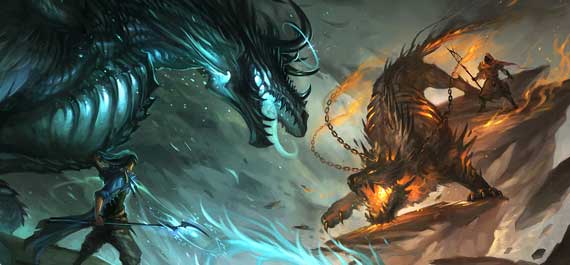Welcome my dear Witches, Wizards, Warlocks and all you other magic folk sat in the rafters. Today’s lesson is the most fundamental lesson you need in order to use magic in your story world.
Sanderson’s First Law Of Magic
“An author’s ability to solve conflict with magic is DIRECTLY PROPORTIONAL to how well the reader understands said magic.” – Brandon Sanderson, 2007
In 2007 Brandon Sanderson wrote an essay proposing the above law as a rule of thumb to follow while including magic in a story. It rather makes a lot of sense and so I would encourage you to adhere to Sanderson’s First Law. If you have never read the essay then please first visit Brandon Sanderson’s website and read the essay before continuing this article. I’ve placed a link to it here.
The essence of The First Law is to allow you the flexibility to create a fantastic magic system for your world yet not fall into lazy story telling by using magic as a Deus Ex Machina. If you explain exactly how your magic system works then you can use it to solve a whole host of plot problems and your readers will accept it. However if your magic system is a mystery to your reader then they will feel cheated if it’s saving your characters all of the time. Just read Sanderson’s article, it’ll make more sense.
Mastering The First Law
Sanderson presents two categories of magic systems: Soft Magic and Hard Magic.
Soft Magic
Soft Magic systems don’t have strict rules and are quite often vague on why magic does what it does or how one can control it. In Sanderson’s words “This leaves room for those who want to preserve the sense of wonder in their books… Books that focus on this use of magic tend to want to indicate that men are a small, small part of the eternal and mystical workings of the universe.” (2007).
Use soft magic if you want to:
- present a sense of wonder in your world
- keep the reader and characters in suspense about what they may encounter
- write about down to earth characters – i.e. not super human.
- Don’t want magic to solve every problem
Hard Magic
Hard Magic systems explain much more about how the magic works and what it can and can’t do. This allows your characters to use magic to solve problems because your reader can understand how the character did it. Your reader won’t feel as though you are trying to cheat them .
Use Hard Magic if you want to:
- Use clever twists and turns in how the magic affects the stories plot
- Enhance the world building of your story
- Solve problems with magic
The Balance Of Magic
Obviously the balance between Soft Magic and Hard Magic is a scale not a binary choice. As you write more about your world and the magic within you’ll learn exactly where it sits on this scale. You may explain a few basic laws of magic but then have a powerful magician perform a task that breaks or bends these rules and so bring an element of wonder into your world. Or you may have a soft magic system that becomes harder when the main character learns more. As long as you remember Sanderson’s First Law your readers will be captivated by the magic in your world:
“An author’s ability to solve conflict with magic is DIRECTLY PROPORTIONAL to how well the reader understands said magic.” – Brandon Sanderson, 2007
World Building for the week:
Decide upon a magic category for your world. Will it be a soft system or a hard system?
Write 1 specific reason why you’ve chosen the magic category. It could be that you want your main character to storm into a room of baddies killing them all with the utterance of a single spell, or you may want to take your readers on the same journey of discovery with your characters as they learn more about the world you’ve created.
This specific reason will be the main focus and hook for magic in your world. It will serve as a personal reminder when you watch a film or read a book with “cool magic” and want to emulate it. This reason will keep your magic system focused and exciting.
Leave a comment to let us know what magic system you use in your stories.
